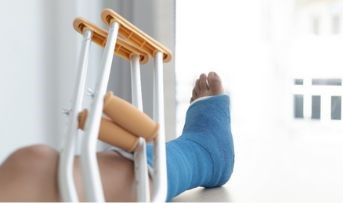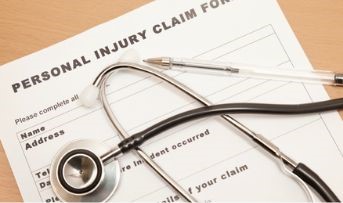General Insurance Blogs, Articles & Updates by - Magma HDI
Have us call you
- RENEW YOUR POLICY
- BUY NEW POLICY

Ways to detect natural gas leaks at home
Natural gas is commonly used at homes for cooking and heating purposes. It is a fantastic fuel and is highly convenient for domestic purposes. However, since the gas is combustible, a leakage in large amounts can cause suffocation and death.
As natural gas is colourless and odour-free, it is always difficult to find any gas leak signs in your home. Also, remember that it might not have physical indications or smells. So, how can you identify natural gas leaks? Let's look at everything you need to know.
Detectors for Natural Gas leaks.
1. Propane & Natural Gas Detector:
The goal of these sensors is to notify about grills or stoves being switched on. Many homes use sensors to detect whether the youngsters in the family are tampering with the grill or stove. These sensors come in both connected and wireless forms. If you have a hardwired sensor, you can use a wireless transmitter to connect to it.
2. Carbon Monoxide Detector:
When these detectors sense a particular level of carbon monoxide in the air, they go off and sound an alert. It has a combination of different sensors that help it function, such as
• A biomimetic sensor changes colour as it absorbs carbon monoxide, and this colour shift activates the alert.
• The silica chip's circuitry system detects carbon monoxide, which reduces the electrical resistance and causes the alarm to sound.
• If the electrodes in a chemical solution present in the detector come into touch with carbon monoxide, they detect variations in electrical currents, triggering the alarm.
Traditional ways to detect a gas leak.
1. The smell of a rotten egg or sulfur:
Natural gas and propane have unique odours for a particular reason. Gas processing companies employ mercaptan as a safety additive because it gives the colourless and odourless gas a distinct odour. Most people associate this odour with rotting eggs or sulfur. So if you smell anything of such nature, investigate for a gas leak.
2. Dead vegetation:
Although you can't see the gas pipelines beneath the soil, a visible patch of dead vegetation can signify a leaky gas pipeline underneath.
3. Hissing sound:
You may hear a mild hissing sound coming from your gas line if there is a leak. This is a solid sign to get the line diagnosed immediately.
4. The bubble test:
Combine a teaspoon of detergent with a cup of water. Apply this solution to the area you believe is leaking and watch for bubbles to form. This signifies that gas is leaking from that location.
The possibility of a gas leak can be frightening, but understanding how to recognise danger and what precautions to take can help you relax. When it comes to gas leak detection, using the methods outlined above can assist you in determining whether your family and house are in danger.
One more step in maximising safety is to get insurance for you, the loved ones and your valuable assets. Browse through different plans of general insurance companies in India and analyse your requirements. Buy the plan that meets all your needs and safeguard your home against these risks.
Click HERE to explore insurance plans from one of the best general insurance companies in India.
Disclaimer: The information provided above is for illustrative purposes only. To get more details, please refer to policy wordings and prospectus before purchasing a policy.

Signs of hairline fractures and tips to heal them effectively
Bone injuries are severe and painful. They make your life miserable, and everyday chores become a huge task. The post-fracture recovery takes a long time to heal the bone. It requires the patient to undergo complex procedures to ensure that the bone heals appropriately and that normal body functions are not obstructed. Although your body has exceptional capabilities to heal itself, you must still take extra care while doing daily tasks.
We all have fallen at least a couple of times in our lives. We bruise, get cut, bleed, sprain, pull a muscle, or break a bone. There is always a risk of a hairline fracture. You must be aware of the term and how risky it can be. If you are somebody who is a stranger to the concept of a hairline fracture, do not fret. This blog discusses what it is, the signs of hairline fractures, and tips for healing them effectively. Let’s begin!
1. What is a hairline fracture:
Hairline fractures are also known as stress fractures. These fractures occur when small cracks appear and grow on the bones of your foot, lower leg, and hands. Hairline fractures are often observed in the bodies of people with a lot of footwork, like jumping, running, hardcore workouts, and other athletic activities in their routine. Moreover, in other cases, hairline fractures result from accidents and collisions against hard surfaces, during which the bones in your body bear an impact and get fractured.
2. Causes of hairline fractures:
As discussed above, excessive and heavy footwork involves activities that put a lot of continuous strain on your foot and ankles. Bones are very rigid parts of our body and can bend only to an extent to maintain the smooth functioning of the ball and socket joints. Persistent pressure on the bones also affects their elasticity and can develop minor stress or hairline fractures.
3. People at risk:
Apart from those who play challenging and heavy-impact sports and the ones who work out a lot might be affected by these hairline fractures with no warning. Genetic and biological factors like gender can influence a high risk of hairline fractures. These fractures are usually common among females.
Physical abnormalities (arched foot, etc.) or using the wrong footwear could also put your bones under stress, even while doing menial chores. Osteoporosis, or weak bones, a history of fractures, and dietary insufficiency (lack of nutrient-rich food items that help strengthen the bones) are other factors that can cause hairline fractures.
4. Signs and tips to heal:
Shooting or sharp pain, inhibition of movement, swelling, inflammation, tenderness, and bruised patches indicate hairline fractures in your bones. You can consult a doctor and get an MRI or X-ray done to confirm their diagnosis in case you have a hairline fracture.
The first and foremost tip for healing the fracture is to rest completely and avoid doing any heavy tasks. Secondly, in the first one or two days, you need to ice the area using ice packs frequently. This will help in reducing the swelling. With the decrease in swelling and lower pain, you can slowly resume your daily routine with extreme caution. Consult a doctor who might recommend crutches, protective shoes (footwear), or a splint to help avoid putting the damaged part under stress and provide maximum support.
That’s all for the signs of hairline fractures and tips to heal them effectively. You must ensure to stay in good health as much as possible. Take the best precautions and remain vigilant. Another wise decision would be to purchase a personal accident insurance policy to avoid monetary stress during mishaps and protect yourself and your family. Explore your options and buy the best personal accident insurance policy that provides optimum protection.
Click HERE to learn more about the personal accident insurance policy.
Disclaimer: The information provided above is for illustrative purposes only. To get more details, please refer to policy wordings and prospectus before purchasing a policy.

Personal accident insurance plans: Does your insurance provide full protection against contingencies
The recent Economic Survey for the year 2022-23 presented by the Government of India indicates a positive growth outlook for the Indian insurance sector. With the general insurance policy penetration rates at par with the global level, one may assume that all insurance policies are equally preferred in the country.
However, upon careful inspection, it is easy to realise that personal accident insurance plans do not enjoy such high penetration as popular insurance like health insurance, which is considered necessary. While many may think the formerly mentioned plan is sufficient to cover every contingency, the coverage against disabilities and personal accidents is often left out of the scope of consideration.
Defining personal accident insurance plans.
Personal accident insurance plans are a type of insurance that provides coverage in the event of an accidental injury or death. It offers financial support to help cover medical expenses, lost income, and other expenses that may arise from an unforeseen injury or death. Apart from monetary compensation, it also offers peace of mind to policyholders without worrying about the financial consequences of an unexpected accident.
The need for personal accident insurance plans with other insurance.
Buying health insurance only provides limited coverage for the illnesses and conditions included in the policy, leading many to believe it is enough to provide comprehensive protection against adverse events affecting one's well-being. However, this assumption is flawed, as can be understood from the definition above. Hospitalisation due to the policyholder's illness is a prerequisite for raising a successful claim. In case of only accidents or injuries, the policyholder is left unprotected, making purchasing personal accident insurance plans essential.
1. Coverage extent:
Health insurance only provides compensation in case of the policyholder's death or hospitalisation due to specified illnesses. It offers no specific coverage or payouts for accidental death or injury. Personal accident insurance plans supplement such cases by covering accidents caused during travel, work, commute, etc.
2. Financial compensation:
One of the benefits of personal accident insurance is that it provides financial support to help cover medical expenses and loss of productive capacity due to an accidental injury or death. This way, hospitalised policyholders who cannot return to work for a stipulated period are offered a daily cash allowance and additional benefits for their dependents, like children's education and transportation allowance.
3. A broad scope of disability coverage:
Most personal accident insurance plans offer coverage for accidental death, permanent partial or total disability, or temporary total disability. This provides incidental disability or death coverage regardless of the cause, unlike health insurance. Therefore, personal accident insurance plans offer peace of mind to policyholders about the financial consequences of an unexpected accident.
4. Flexibility of coverage:
Personal accident insurance plans are generally more affordable than other insurance types. They are also flexible, allowing policyholders to choose the ideal coverage for their needs and budget, making it accessible to a broad range of potential policy purchasers.
Standard exclusions to keep in mind.
Like every insurance product, personal accident insurance plans exclude certain factors such as natural death, high-risk work environments, childbirth or pregnancy, suicide, and self-inflicted injuries. Accidents caused while participating in extreme sports, under the influence of intoxicants, or while engaging in criminal activities are other reasons that most insurers do not provide coverage.
Despite their exclusions, personal accident insurance plans are excellent supplements to health insurance and provide relatively comprehensive protection against the financial impact of accidental injury or death. We urge you to consider purchasing personal accident insurance plans to protect against unforeseen accidents.
Click HERE to browse through different personal accident insurance plans.
Disclaimer: The information provided above is for illustrative purposes only. To get more details, please refer to policy wordings and prospectus before purchasing a policy.

Lost your car keys? Here’s what you should do
Losing your traditional car keys is a minor concern as you can quickly get a duplicate key made by the car service centre. However, as vehicles have become more technologically sophisticated, getting new keys can be more technical and expensive than ever.
It can take several steps and leave a dent in your wallet to replace a lost or stolen key, depending on the type and model of the car you drive. Fortunately, when comparing new car insurance rates, you can purchase an add-on coverage to protect your car keys.
While the add-on cover can limit your expense, here's what you should do if you lose your car keys.
1. Verify carefully:
Before deciding, conduct a comprehensive search for the keys everywhere. Retrace your steps and cover all the spaces you may have placed your keys.
2. Inform your insurance provider:
When you lose your key, the first thing is to write to the insurance provider and tell them what happened. With a misplaced key, there is a considerable risk of vehicle theft. Additionally, they may require the submission of an FIR filed with the nearest police station.
3. Reach out to a franchised dealer:
Contacting a manufacturer's dealer for your car is recommended if you need an OEM replacement key. It frequently costs money and takes time to obtain. If your original key offered features like a hands-free boot release, you will receive a new key identical to it in addition to programming for those features.
4. Decide on your car's essential type:
If you lose the existing key and have no spare, consider switching your key type. Traditional transponder, FOB, and intelligent keys are options to choose from.
How to recover different kinds of keys.
1. Traditional key:
You must put a conventional car key into the ignition cylinder to start your vehicle mechanically. If you misplace your car keys, you can phone an auto locksmith, who can immediately make you a new key. You might need a new ignition lock cylinder and key from the dealer or another repair facility.
2. Transponder key:
These keys are more advanced and detected by the Electronic Control Unit that starts the engine. A skilled electronic locksmith can help as they have spare keys equipped with the same tuning chips as your car. But they bill you more than they would have for a regular car key.
3. Smart key:
Modern vehicles almost universally include push-button start and keyless entry. However, we advise keeping a spare in your glove compartment for emergencies. If you lose your keyless entry FOB, you can buy a spare key or have your car towed to the closest brand dealership, where they will program a new FOB to pair with your vehicle. Smart keys are the most expensive set of keys among all types, and you should only get them from your authorised car dealer.
Losing your car key is not a significant concern as there are several ways to recover a new one or attain a spare key. Also, consider purchasing key protection coverage while evaluating new car insurance rates for comprehensive coverage of your car and its key. It's always a safe option to watch out for your car keys and keep them safely in your pocket and avoid leaving them unattended.
Click HERE to buy comprehensive car insurance.
Disclaimer: The information provided above is for illustrative purposes only. To get more details, please refer to policy wordings and prospectus before purchasing a policy.


